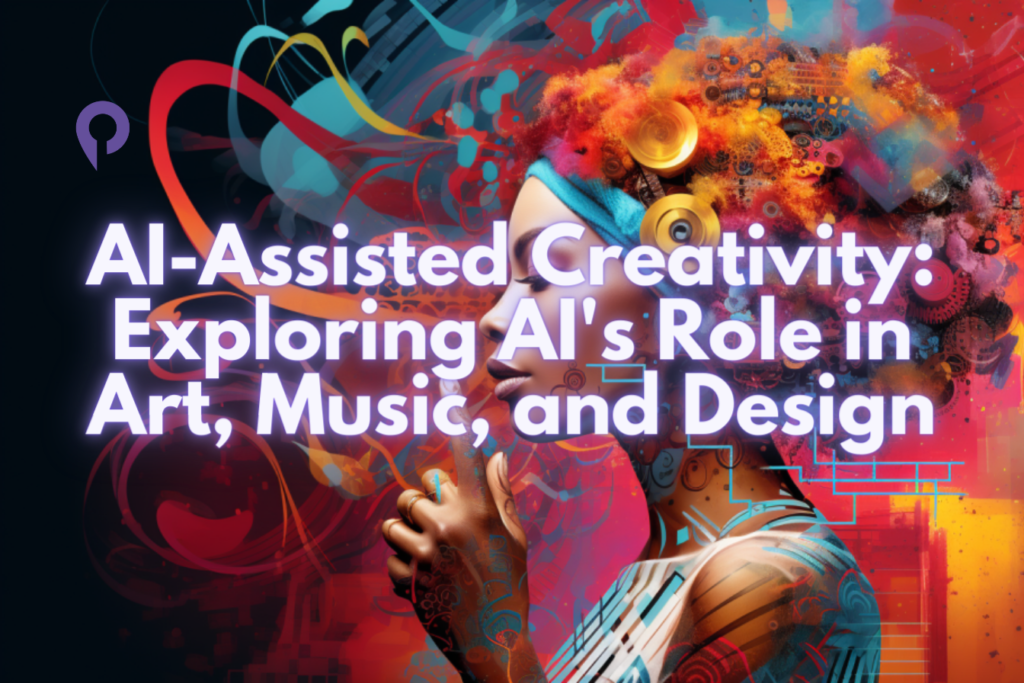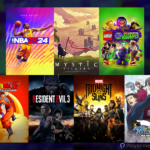Artistic expression has always been a realm exclusive to the human mind – a canvas for human creativity to flourish. However, in recent years, Artificial Intelligence (AI) has emerged as a compelling tool that can enhance and augment human creativity in fascinating ways. AI has the ability to analyse vast amounts of data, learn patterns, and generate outputs that can rival human creations.
From creating captivating artworks and composing soul-stirring music to designing innovative products, AI’s role in various creative fields is evolving rapidly. In this article, we will explore how AI is reshaping art, music, and design and delve into some remarkable examples of AI-assisted creativity.
Related: AI and Ethics: Addressing Bias, Transparency, and Responsible AI Development
Understanding AI
AI refers to the simulation of human intelligence in machines that are programmed to think and learn like humans. AI systems are designed to carry out tasks that typically require human intelligence, such as visual perception, speech recognition, and decision-making. It’s something we encounter in our daily lives.
Imagine a machine or a computer program that can think, learn, and make decisions like a human. It’s the technology behind the voice assistants on our phones, the recommendation systems on our favourite shopping websites, and the navigation apps that help us find our way. It’s like having a digital brain that can process information, understand patterns, and make decisions based on what it has learned.
The impact of AI on our world is profound and far-reaching. It’s changing how we work, learn, communicate, and entertain ourselves. As AI continues to evolve, it can potentially solve some of the most challenging problems of our time, from climate change to global poverty. It’s not an overstatement to say that AI is reshaping our world and how we live.
Also Read: Understanding Deep Learning: Unveiling the Power of Neural Networks
AI in Art: Creating Artworks That Push Boundaries
AI has brought a revolutionary change to the world of art, pushing the boundaries of what was previously thought possible. AI algorithms can now generate original and mesmerising artwork by analysing and learning from vast amounts of data.
Notable Examples
- “Portrait of Edmond de Belamy” by Obvious Art: A striking painting created by an algorithm developed by the creative group, Obvious Art. This artwork was then auctioned for a jaw-dropping $432,500. The ability of AI to produce original artwork demonstrates the potential for collaboration between man and machine in the creative process.
- “The Persistence of Chaos” by artist Guo O Dong: The artwork is a functional laptop infected with some of the worst computer viruses and malware. The work was assembled by a deep learning algorithm that analysed the catalogue of malware-infected devices.
- “The Next Rembrandt” by ING Group: A computer algorithm by ING Group created a new art piece inspired by the 17th-century Dutch painter Rembrandt. A high-quality 3D scan of one of Rembrandt’s original paintings was used as a reference to create the piece. The algorithm learned and analysed the features of the paintings, such as the subject’s age, the direction of the brushstrokes, and the colours, to produce an original piece that resembled the artist.
AI in Music: Composing Harmonies That Touch the Soul
Music, known as the universal language of emotions, has been taken to new heights with the assistance of AI. There have been many examples where people have used AI to compose a new song that went viral.
Notable Examples
- “Flow Machines” by Francois Pachet: The most notable creation of Flow Machines is “Daddy’s Car”, a pop song resembling The Beatles. Blending different artists’ styles, this AI-composed piece demonstrates the ability of AI to understand and replicate various musical genres.
- Amper Music: An AI-powered platform that allows users to create and customise royalty-free music in minutes. Users can use Amper Music to select the genre, mood, tempo, and other parameters to create tailor-made music that fits their specific needs.
- Jukedeck: It is an AI-powered music generator that creates original music tracks tailored to video content. A user can add an audio library, metadata about the video, and Jukedeck generates a fitting music track that matches the user’s style.
AI in Design: Designing Innovative Products with AI Precision
Designing aesthetically appealing and functional products requires a delicate balance of creativity and precision. AI has made this process more efficient by assisting human designers in creating innovative designs.
Notable Examples
- Autodesk Dreamcatcher: An AI-assisted design tool. By inputting a desired set of parameters, such as material constraints and product goals, Dreamcatcher generates a variety of design options that humans can further refine. This collaboration between AI and human designers has the potential to revolutionise product design, leading to more efficient and aesthetically pleasing solutions.
- Non-Uniform Rational B-Splines (NURBS): A mathematical representation model used in computer graphics and Computer-Aided Design (CAD). NURBS allows designers to create 3D models of a product, which can then be refined in CAD or other designing software.
- Adidas: The company has effectively harnessed AI in its product design and development process. This has significantly expedited the creation of new designs, reducing the timeframe from months to just a few days. AI has also helped optimise the design of Adidas’ shoes, leading to products that offer enhanced comfort and performance. You can read more about it here.
Also Read: The Impact of Artificial Intelligence on Business: Key Trends and Insights
Frequently Asked Question
Can AI-Assisted Creativity Replace Human Creativity?
No, AI-assisted creativity does not replace human creativity. Instead, it enhances and amplifies it. AI algorithms can offer valuable suggestions and insights to human creators, encouraging unique and innovative creations. For instance, AI models like GPT-3 can generate ideas and provide creative prompts to writers.
What Are Some Ethical Considerations in AI-Assisted Creativity?
Ethical considerations in AI-assisted creativity include concerns about originality and authenticity when AI systems produce artwork resembling famous artists’ styles. There are also privacy and data usage concerns due to AI’s ability to analyse user preferences and generate personalised content. Balancing the benefits of AI assistance with preserving human creativity is a key ethical consideration.
How Can Businesses Effectively Use AI-Assisted Creativity?
Businesses can effectively use AI-assisted creativity by identifying creative processes that can be automated or augmented with AI, understanding the limitations of AI and balancing it with human creativity, and addressing ethical concerns related to authenticity, originality, and privacy. Examples include using AI-assisted music generators for content creation and generative design software for product design.





